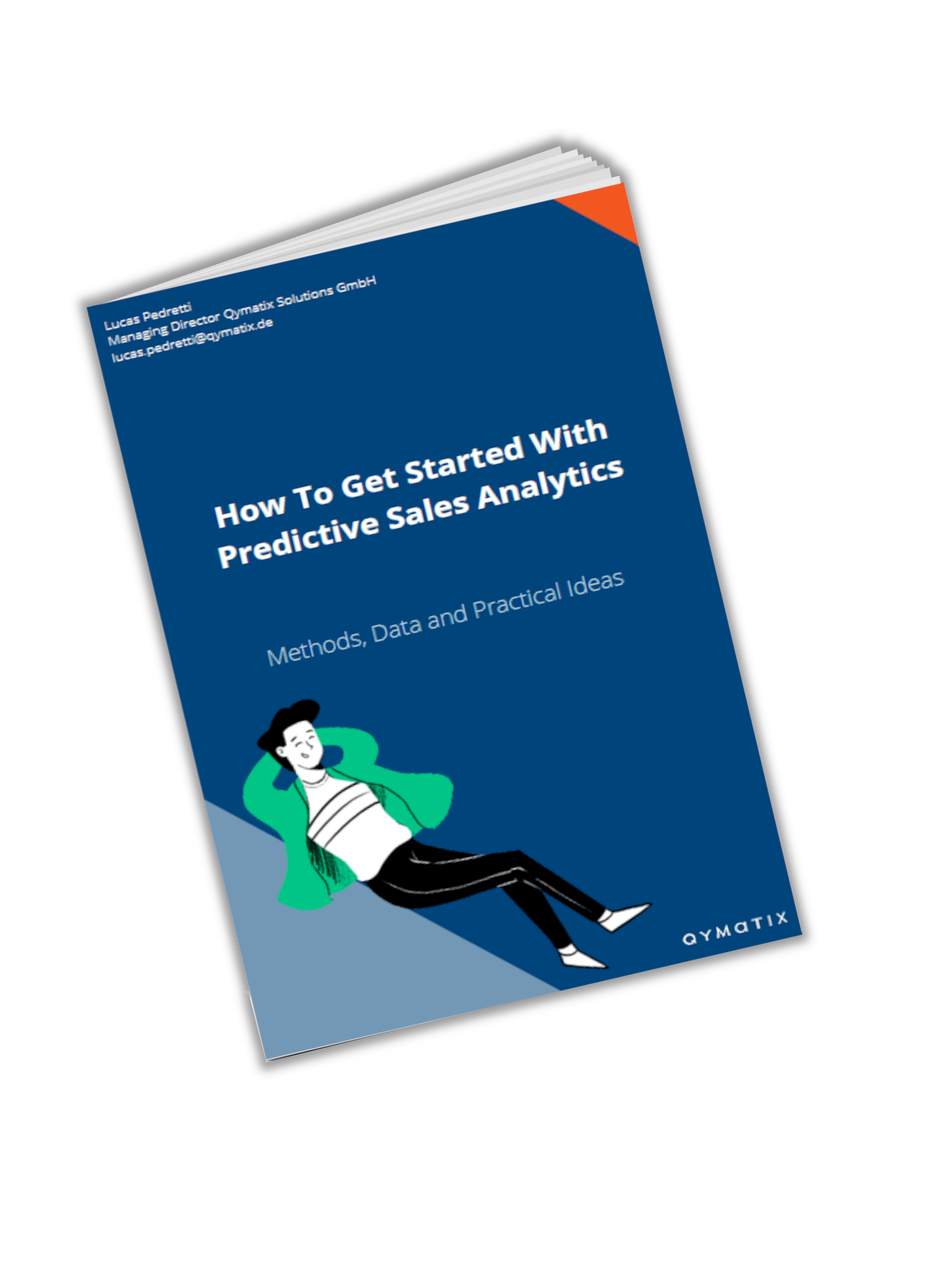B2B Predictive Analytics – Successful Data Management

Please enter your Email address
How to make data work for your B2B sales team while avoiding common pitfalls in data management
We can associate power with strength, force and influence, but also with destruction and violence – the typical two sides of a coin.
Sayings like “data is the new oil” or “data is a valuable asset” are on everyone’s lips in the age of Big Data. These statements might hide a profound truth, nevertheless. If used rightly, data is worth its weight in gold for a company.
Data gives you information about customers, products, sales, employees and much more. In all areas of a company, data can help to support planning, optimise processes and improve sales potential. Companies knowing how to manage their sales data gain an enormous competitive advantage. Google, Amazon and Facebook are virtually impossible to catch up.
The downside of the data medal also means that competitors will overtake you if you ignore how to use your sales data, or don’t do it at all.
In this article, we show you three typical mistakes in handling data in B2B sales and how you can do it better.
Point 1: Many companies invest time and stress for bad data
To explain this point in more detail – first: by “bad data” we mean error-prone and time-consuming data. Sales data that are, in the end, used by nobody (remember those sales reports you wrote?).
In many sales departments of companies, sales staff are under much pressure by having to fill out documentation with forecasts, e.g., “How much do you sell to customer XY in 2020?”
These forecasts, which cost sales staff much time, are also very error prone. Even the most experienced sales representative with the best intuition will often be wrong about such estimates.
Of course, the sales managers in the department are also aware of this, which often leads to these forecasts not being used and going into the archive untouched.
We provide you here with just one of many examples of what “bad data” means. “Bad data” starts with ambiguous, error-prone and time-consuming manual forecasts that nobody will see again.
Our recommendation on how to relieve your sales team and collect useful data:
Analyse your processes exactly and question their benefits for the company. Which documentation and reports make sense, and which don’t. There are certainly some process steps in your sales chain that can be automated or simplified by data analysis programs.
Let’s take the example from above: The sales forecasts that sales representatives are often asked to fill out can be made faster and more reliably with predictive analytics software.
Predictive analytics learns from past sales data and recognises patterns. The company’s own sales data serves as an essential ark to make predictions for the future. There is predictive sales software that promises you a hit rate of up to 80%.
Predictive analytics learns from past sales data and recognises patterns.
Taking advantage of predictive sales analytics gives you better data in a shorter time. In the best case also relieved sales employees, who are happy not having to fill out manually endless excels lists and tables.
Point 2: Some companies do not have a clear focus
In recent years, many medium-sized companies have been overrun by the possibilities of digitisation. There are many data sources: Google, Facebook, Amazon, YouTube and other social media channels in which millions of users – or for companies: Customers and competitors – produce masses of data.
Lacking focus leads to an impossible situation where companies want everything at once. Many digitisation projects are being created simultaneously in different departments. According to a study by Accenture, 4 out of 5 digitisation projects in medium-sized businesses are abandoned or end unsuccessfully.
Our tip: Do one after the other and start with what you already have:
There is a data set that none of your competitors has: Your company’s own sales data from your ERP or CRM.
Start by focusing on this valuable data and getting the best possible benefit out of it. The historical ERP and CRM data alone can be used to determine pricing potentials, migration risks and cross-selling opportunities.
Once your company has created such a foundation, you can still add external data, such as competitive information.
Point 3: Many companies miss out the power of data
Point 1 dealt with bad data, point 2 with data masses. Here, in point 3, we are talking about companies that have useful data but do not fully exploit its potential.
The potential can be wasted, especially at two points in the sales process chain:
First, in data analysis: companies with valuable sales transactions use them “only” for revenue and profit evaluation. With modern, AI-supported software programs, however, much more can be gained from these data sets.
Artificial intelligence software can answer questions, such as: “Which customers could churn?” or “For which products/customers do my sales representative have more room for manoeuvre in pricing negotiations?”
The next point in the sales chain, where many companies give away potential is during implementation. Unfortunately, many firms possess useful data and a well-founded data analysis, but their sales team are unable to tap into this unused potential.
If a company has excellent sales insights, but the sales team takes no action about them, it earns nothing.
Moreover, this implementation is still difficult for some sales departments because this often requires a deviation from previous procedures.
In the best case, the interaction between software and employees looks like this: If, for example, the analysis program shows a churn probability of 80% for five customers, the sales staff will become active with these five customers and take appropriate countermeasures.
CALCULATE NOW THE ROI OF QYMATIX PREDICTIVE SALES SOFTWARE
How Customer Data Increase Sales? Successful Data Management For B2B Predictive Analytics – Summary
Using the right data correctly is the art of “Big Data” currently. In this article, we have told you about three common mistakes in the handling of data in B2B sales and have given our recommendation on how to avoid them.
Companies should not waste their capacities on error-prone and time-consuming data procurement measures. It is most beneficial to analyse the sales processes and automate them if necessary. Look for supporting AI-based software programs that relieve the sales force of documentation and sales forecasts.
Another key message of the article is: Start with your company’s data records and fully exploit their information potential with AI-based predictive analytics before using expensive and time-consuming external data sources
I WANT TO GET THE BEST OUT OF MY DATA
Free eBook for download: How To Get Started With Predictive Sales Analytics – Methods, data and practical ideas
Predictive analytics is the technology that enables a look into the future. What data do you need? How do you get started with predictive analytics? What methods can you use?
Download the free eBook now.
- We will use this data only to contact you for discussing predictive sales KPIs. You can read here our declaration on data protection.


